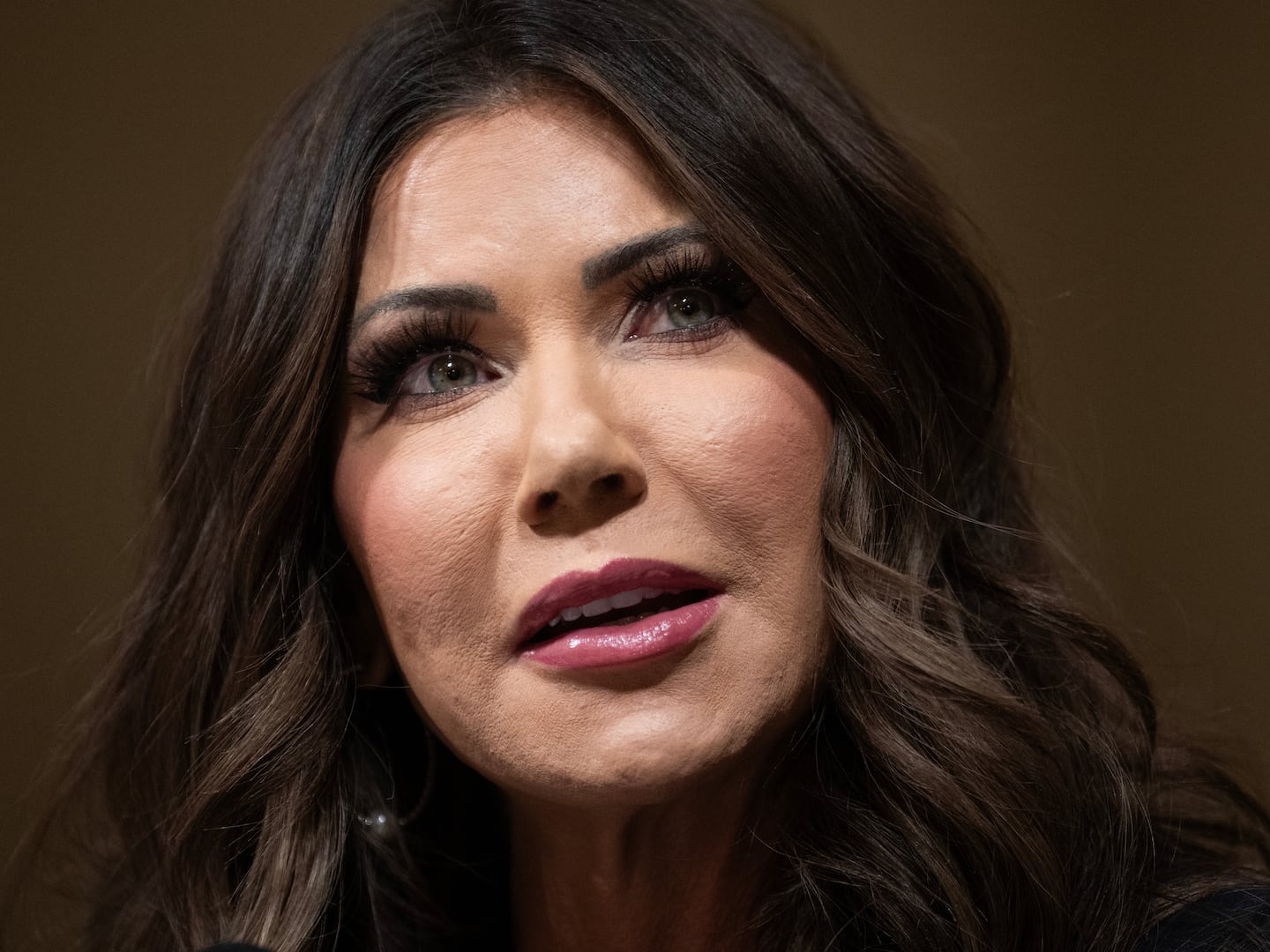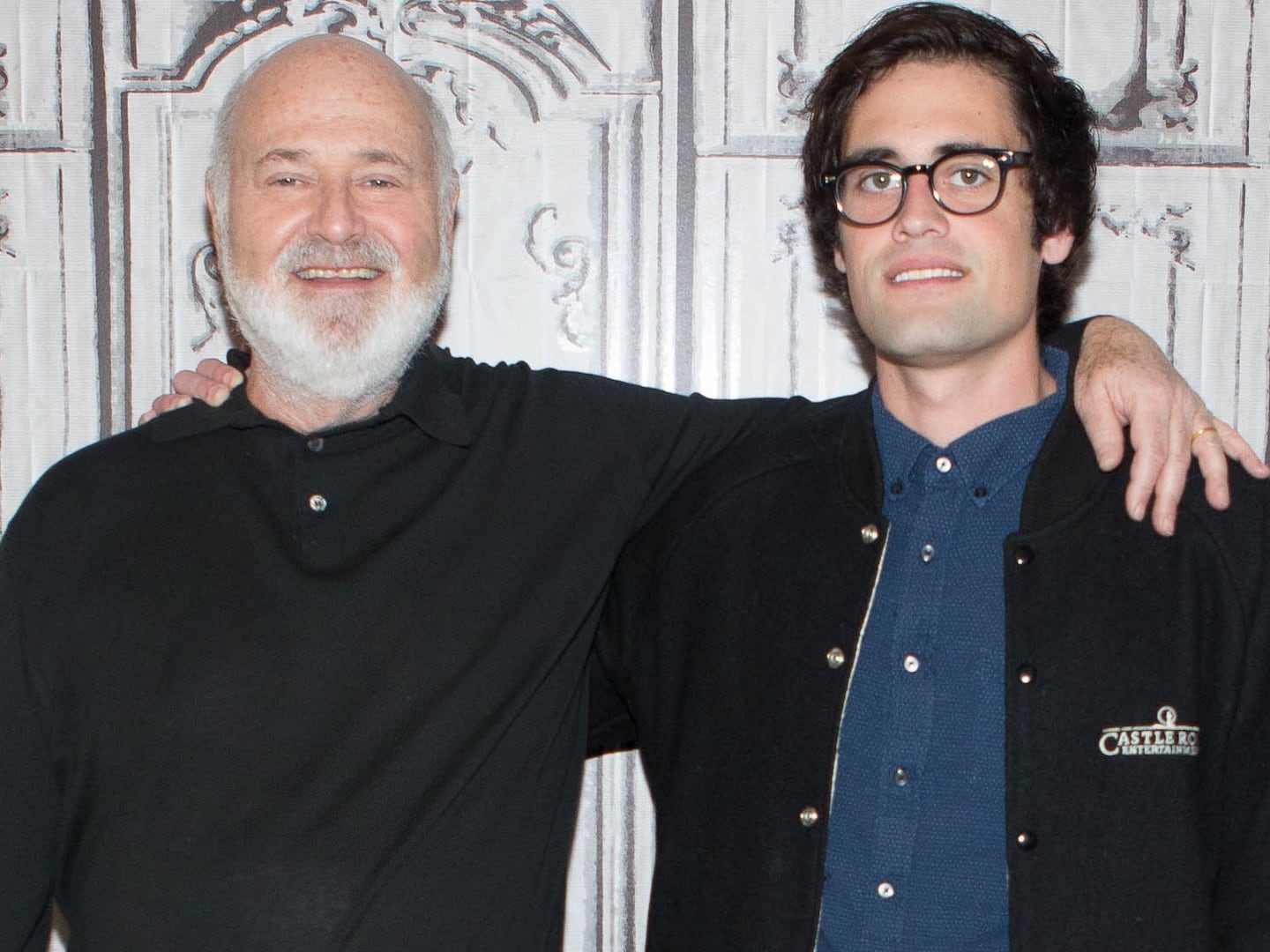SEOUL—When Mike Pompeo as CIA director secretly met North Korea’s Kim Jong Un in Pyongyang two months before Kim and President Donald Trump’s notorious summit, Kim greeted him with the line, “Mr. Director, I didn’t think you’d show up. I know you’ve been trying to kill me.” Pompeo—assuming all was in jest—shot back, “Mr. Chairman, I’m still trying to kill you.”
The Daily Beast has learned that Kim was not joking at all.
A source close to an assassination plot has told The Daily Beast that there was an active plan “to topple the Kim regime.” And a former officer at South Korea’s National Intelligence Service confirms that the intel agency was providing financial backing for a plan that would have shocked the world. North Korea believed the CIA was also part of the plot.
The team of would-be Kim-killers hatched their plot not only in Pyongyang but in Russia, where they could more easily obtain arms and hoped to avoid the intense scrutiny of Kim’s elite bodyguards.
In Seoul, the person closest to the plot was Doh Hee-youn, CEO of the Citizens Commission for Human Rights of Abductees and North Korean Refugees. Doh communicated with plot leader Kim Seong-il, who was based in the Siberian city of Khabarovsk across the border in Russia, where he was supervising a North Korean team hired to cut down trees in surrounding forests.
“For two or three years, I had conversations,” with Kim Seong-il, whose “intent was to topple the Kim regime,” Doh told The Daily Beast. Seong-il initiated the relationship, said Doh, by getting in touch with him after hearing him on short-wave radio reports put out by South Korea’s Korean Broadcasting System. As a trusted manager with his own small office, Kim could speak on Russian mobile phones without fear of eavesdropping.
Coup plotters planned to distribute USB sticks and memory cards to spread the word. Finally, “the supreme leader” would be removed—and assassinated.
The risks were all too obvious. Kim Jong Un’s team of bodyguards, skilled in the martial arts, in turn have the constant close-in protection of hundreds of troops. Whenever the leader ventures out for a look at a factory or farm or the launch of a missile, battalions of soldiers precede and accompany him.
Against those odds, the plot advanced to the point at which a tight-knit circle was ready to kill Kim. Informants inside his entourage may have advised of his movements. Among them is said to have been a senior official in the power elite ever since the rule of Kim Jong Il, who died in 2011.
Kim Seong-il was well aware of the hazards of his plot. “In revolution there are always sacrifices,” Doh recalled him saying. “We knew it could be dangerous. Someone had to risk what we were going to do.”
Assassination, cutting off the head of the snake, was the only way to end the rule of the Kim dynasty.
The conduit for the flow of money from the NIS while Kim Seong-il was still in Khabarovsk was the South Korean owner of a trading company in China that previously had a joint venture with a North Korean state company for producing animated films—a lucrative sideline for the Pyongyang regime.
The NIS funneled funds through a separate company that the businessman had set up in Dandong, a large city on the Chinese side of the Yalu River border with North Korea. Another man, described as a friend of Kim Seong-il, was supposed to deliver the funds to Kim and his organization in Pyongyang.
The plot—the closest anyone has come to snuffing North Korea’s dictator—collapsed in disaster.
As laid out by Doh and an NIS insider, the plot appears to be corroborated by a video seen by The Daily Beast that was produced by North Korea’s state-run Uriminzokkiri media. The North posted the 23-minute video online in May 2017 boasting that the plotters, including Kim Seong-il, had been rounded up, but the film has never been previously reported by either South Korean or foreign media.
Uriminzokkiri did not refer to Kim Jong Un by name, saying instead that “the supreme leader” was the target while citing “evidence that the CIA and NIS have plotted terrorism.”
In reality, the ringleader of the plot was a mysterious “high-profile man in Pyongyang,” according to Doh. On the video, Kim Seong-il, obviously having been tortured, is shown confessing to organizing a team tasked with “removing” Kim Jong Un from power.
Saying that he was financed by the NIS, Seong-il details a scheme to kill the supreme leader with either a biological toxin or polonium, the same radioactive substance that killed the ex-KGB spy Alexander Litvinenko in London in 2006.
At the same time the video sought to establish a link between the NIS and the CIA, which it portrays as the primary villain. In that spirit, Kim Seong-il, in his confession, says the CIA was to provide the means for killing Kim Jong Un. “This is the terrible devil scheme,” says the video. Kim’s puffy, slightly bruised cheeks indicate the suffering he endured along with alleged threats to kill his son.
The video, reporting on the arrest and execution of the miscreants, remained online for only a few days, according to Doh. That was long enough to show enemies the fate that awaits anyone contemplating the overthrow of the Kim regime. Having gotten the message across to the CIA and NIS, both of which presumably monitor the site, the video was taken down before either the foreign or Korean media noticed it. No need for long-suffering North Koreans to find inspiration and ideas for annihilating their hated leader.
According to Uriminzokkiri, the NIS sent funds four times—first $20,000, $10,000, and then two tranches of $50,000.
A year after the plot was foiled, Kim welcomed Pompeo to Pyongyang for preparations ahead of the Trump summit, to be held in Singapore in June 2018.

North Korean leader Kim Jong-un (2nd R) visits an aircraft factory as he is accompanied by Russia's Deputy Prime Minister and Minister of Industry and Trade, Denis Manturov (3rd L) in Komsomolsk-na-Amure, Russia on September 15, 2023, as part of his official visit to Russia, Kim paid a visit to the Yuri Gagarin aircraft factory, a branch of the Russian United Aircraft Corporation (UAC), and conducted inspections, according to Russian officials.
Photo by Gov of Khabarovsk Reg/M. Degtyaryov/Anadolu Agency via Getty ImagesKim, whom Pompeo describes as “this small, sweating, evil man” in his book, wanted the U.S. to know he was well aware that he had been the target of an assassination plot.
By greeting Pompeo as he did, Kim was issuing a warning against future designs the CIA might have to destroy him. North Korea’s long-ruling Kim dynasty has ensured its survival against coup attempts, but none is believed to have come closer to striking a blow at the heart of an elite that has survived through three generations of dictatorial rule.
Ironically, the failure of the coup plotters, with fantasies of altering the course of history, may have buttressed a system that owes its survival to close-in layers of security. As it was, the plot precipitated the overhaul of Kim’s personal guard force. The chief, blamed for not detecting the danger, has disappeared, probably executed.
The story of the relationship between Doh and Kim Seong-il was first reported in Monthly Chosun, the magazine of the Korean newspaper Chosun Ilbo. The story exposed the hatred shared by supposedly loyal adherents willing to risk their lives to get rid of the Kim dynasty. In a saga that could have given them a place in the annals of world history, they are believed to have been betrayed by sources inside South Korea.
The tale of Kim Seong-il’s role begins with Doh and Kim winning each other’s confidence, overcoming barriers of suspicion and inhibitions as they talked about their hatred for North Korea’s leadership under third-generation heir Kim Jong Un, grandson of regime founder Kim Il Sung.
“He asked for help in two areas,” Doh told The Daily Beast. “One, please let the world know about North Korean human rights abuses. Two, he wanted to be connected to the National Intelligence Service,” then known as the Korean Central Intelligence Agency. “He called from Russia,” said Doh. “After a while we called each other brothers. He was the younger brother. I was the elder. He believed we could disassemble this regime.”
“Kim Seong-il moved back to Pyongyang to start the operation,” Choi Woo-suk, the veteran Monthly Chosun editor who wrote the article, told The Daily Beast. “There was a team. A high person at the top was involved. That person had the trust of the regime from the era of Kim Jong Un’s father, Kim Jong Il.”
Doh was sending messages to Kim Seong-il on a satellite phone, along with detailed instructions on how to use it, while Kim was still in Russia. In Pyongyang, Kim “called me three times,” Doh recalled.
Intrinsic to the plot was a scheme to “start a revolution among the North Korean people,” said Choi. “Kim Jong-un is even worse than his father so there was support.”
“The Kim regime is vulnerable,” he went on. “There is a revolutionary force inside North Korea. Key people inside our own government said, ‘We did support the revolution.’”
Doh blames the failure of the operation, in part, on a populist mass movement on the streets of Seoul which brought down the conservative president in 2017. She was replaced with a liberal leader who wanted to reset relations with the North and pulled the funding.
Around the time of the inauguration of Moon Jae-in, Doh messaged Kim: “Do not expect help from the NIS,” which had promised another $300,000.
Those were perilous times. It was in the same time frame, in February 2017, that Kim Jong Un ordered the assassination of his older half-brother, Kim Jong Nam, who was killed by a nerve agent splashed in his face at the international airport near the Malaysian capital of Kuala Lumpur.
Kim Jong Un was on edge about signs of a plot even as South Korean President Park Geun-hye, daughter of the long-ruling dictator Park Chung-hee, was booted out of office, tried, convicted and jailed. By the time mass protests had broken out in Seoul against Park, North Korean operatives are believed to have cottoned on to Kim Seong-il’s activities. Now it’s suspected that South Korean sources, in the turmoil surrounding her demise, may have relayed names of the plotters to a contact close to Kim Jong Un.
Incredibly, the NIS may have suspected something was amiss but was still communicating with Kim Seong-il while he was already in North Korean custody and being told what to say in order to obtain the names of others in the plot.
“If this assassination fails, it means imminent war on the Korean peninsula,” said the last message to Kim after Park Geun-hye had already been jailed, according to Uriminzokkiri.
The new president, Moon Jae-in, pleading for North-South reconciliation and eager for dialogue with Kim Jong Un, swept the NIS clean of operatives who might support a movement to overthrow the supreme leader. “As soon as a new NIS director was appointed, he did away with the whole thing,” said Choi.
Lee Byung-ho, the NIS director under President Park, was arrested on spurious charges after North Korea demanded he be extradited to Pyongyang. Lee appeared to confirm the plot to get rid of Kim Jong Un, saying while on trial in Seoul, “We have supported the revolutionary force inside North Korea.” Lee, now free, wound up serving two and a half years in prison.
One person on Lee’s side was Pompeo. In May 2018, after seeing Kim Jong Un in Pyongyang, according to Monthly Chosun, Pompeo awarded Lee, already out as NIS director, the George Tenet Medal “for his life-long dedication to covert operations against North Korea.”
On the video seen by The Daily Beast, Kim Seong-il says Doh was trying to influence him, to “incite hatred against socialism.” Seong-il also confesses he was “making money from this project.”
“The North Korean video shows how Kim Seong-il was traced,” said Doh. “Also many working with him were traced.”
Doh realized that North Korean security was linking him to the plot when a defector told him he had heard his name on the video.
The plotters may not have gotten close enough to assassinate Kim Jong Un, but the crackdown was brutal and quick once Kim Seong-il had confirmed the extent and intent of their wild scheme. In the end, 15 people were arrested and executed, including several who were said to be “influential, higher-up officials,” said Doh. “Their immediate family members were also arrested and executed or sent to prison.”

North Korean leader Kim Jong Un visiting the Vostochny Cosmodrome in Amur region on September 13, 2023.
Mikhail Metzel/Getty ImagesThae Yong-ho, who was North Korea’s deputy ambassador to the United Kingdom before defecting in London in 2016 with his wife and two sons, said “the structure” of the North Korean system “does not allow any coup,” but he told The Daily Beast that the system is constantly facing the hostility of those who want to eliminate him from the scene.
In a regime in which neighbors are told to spy on neighbors and seeming friends report the slightest signs of discontent among colleagues, the chances of a successful conspiracy would appear to be virtually nil. Incredibly, however, the 2017 plot was not the only effort to eradicate Kim Jong Un.
Jang Se-yul, a defector, told The Daily Beast he had heard about another plot against the regime before escaping from North Korea.
This one also involved Russia. North Korean security was alerted when the news got out in 2016 that Kim Jong Un planned to visit Vladivostok for what would have been his first meeting with President Vladimir Putin. The trip was abruptly called off, said Jang, not because Putin did not want to see Kim but because North Korea’s security network got wind of an elaborate plot to kill him on Russian soil.
Jang estimated that 30 people were identified as plotting against Kim in Vladivostok in 2016—some of them directly involved—others in the same network. “The plan was exposed,” said Jang, president of an organization called the Foundation for Unification. “Several dozen workers in Russia were arrested and executed.”
“In Russia, it’s very easy to obtain weapons,” Jang explained. “There are many long-range sniper rifles. There was a plot with the collaboration of people in North Korea and in Russia.”
Jang said his organization submitted to the NIS all it knew about schemes to kill Kim.
“According to internal documents, there were several plots against Kim,” said Jang. An informant from within the North’s state security agency escaped to China, provided information to the NIS and then “made a secret connection to the U.S.” that got him acceptance in the U.S. as a refugee. “I was shocked by what he disclosed,” said Jang. “He had radical information. In North Korea there are many assassination plots,” all of which so far have either failed or been discarded in the planning stages.
In another instance, said Jang, “they found a weapon by which you can target someone from one mile or so. The command that guards Kim Jong Un did not find this weapon,” but Kim knows not to count just on his guards.
“The third inspection team found the weapon” and opened “a full-force investigation,” Jang explained. “They understood this is not a weapon that anyone can bring in. The investigation went on for more than a year.”
The conclusion was inescapable. Someone in the command that guards Kim Jong Un had to have been responsible for bringing the weapon into North Korea. The commander of the guard unit “was tortured, but he committed suicide,” said Jang. “They brought out his body and ‘executed’ him again in front of public officials.”
Plots assume different forms. Eight years ago, after live ammunition was discovered in the hands of soldiers who were to go on parade through central Pyongyang, said Jang, six people were executed.
In battles of wits, North Korea’s security teams have so far been the winners. As absolute ruler over a society in which millions of hungry people live in poverty, Kim Jong Un knows you can’t be too paranoid.









